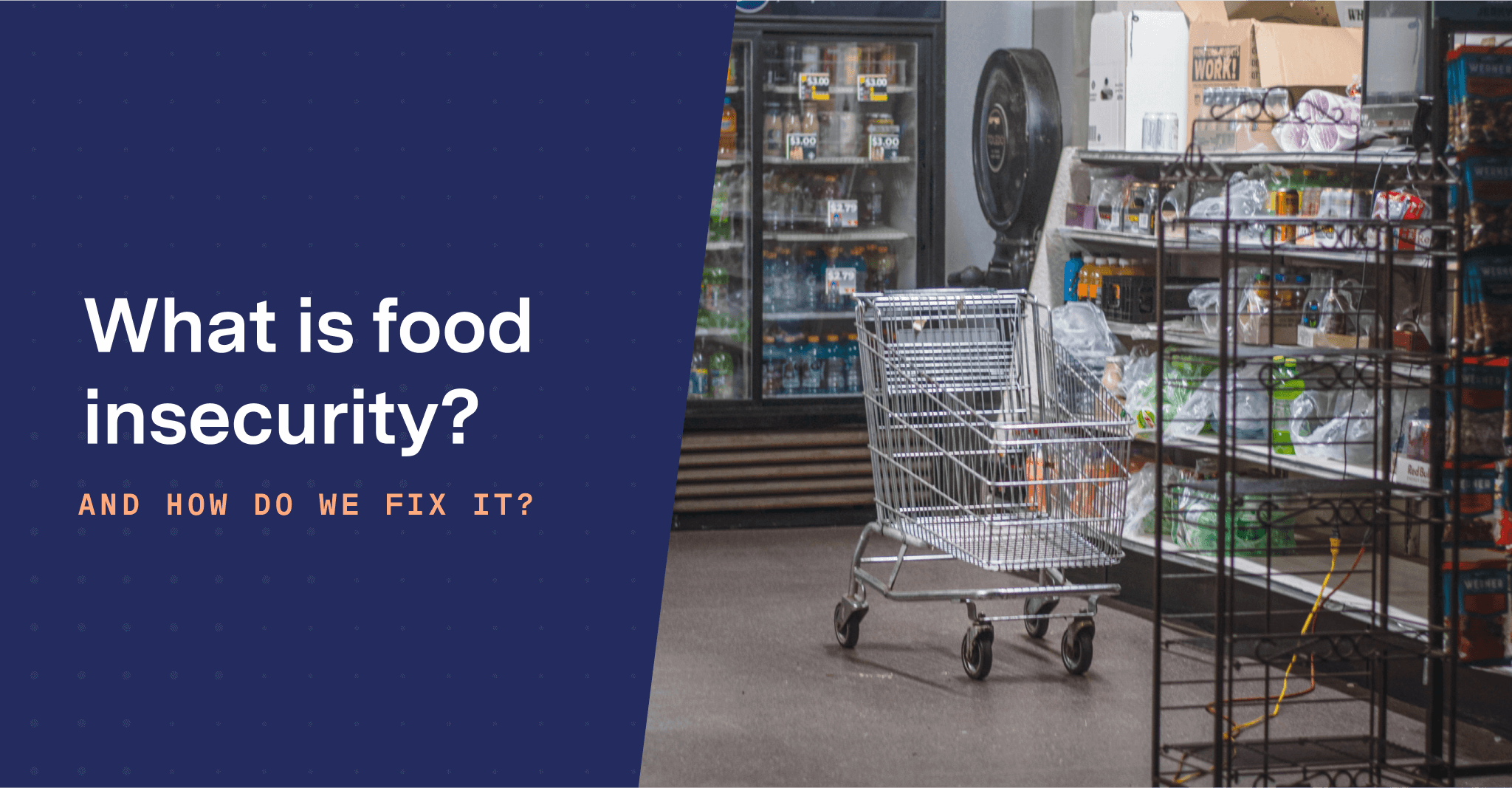
What Is Food Insecurity, and How Do We Fix It?
Many Americans shop at the grocery store without a second thought. But that’s not the case for others: many lower-income families have to make tough choices between bills and meals. That often means forgoing nutritious, healthy food, as it’s frequently more expensive. They might not even have a grocery store nearby, making access to healthy food even more difficult.
Food insecurity is one of the most pressing issues for community leaders. There are many ways to address food insecurity. However, solutions won’t be optimal unless leaders understand the root causes of food insecurity, and how they’re interrelated.
Let’s dive into what food insecurity is, what factors lead to food insecurity, and how it affects our communities. Then, we’ll talk about how you can optimize solutions that combat the effects of food security issues in your area.
What is food insecurity?
Food insecurity is a lack of access to enough nutritious food for a person to maintain a healthy diet and lifestyle. Access can mean a physical lack of available food, such as not enough grocery stores, or an economic lack of available food, like not having enough money to purchase food.
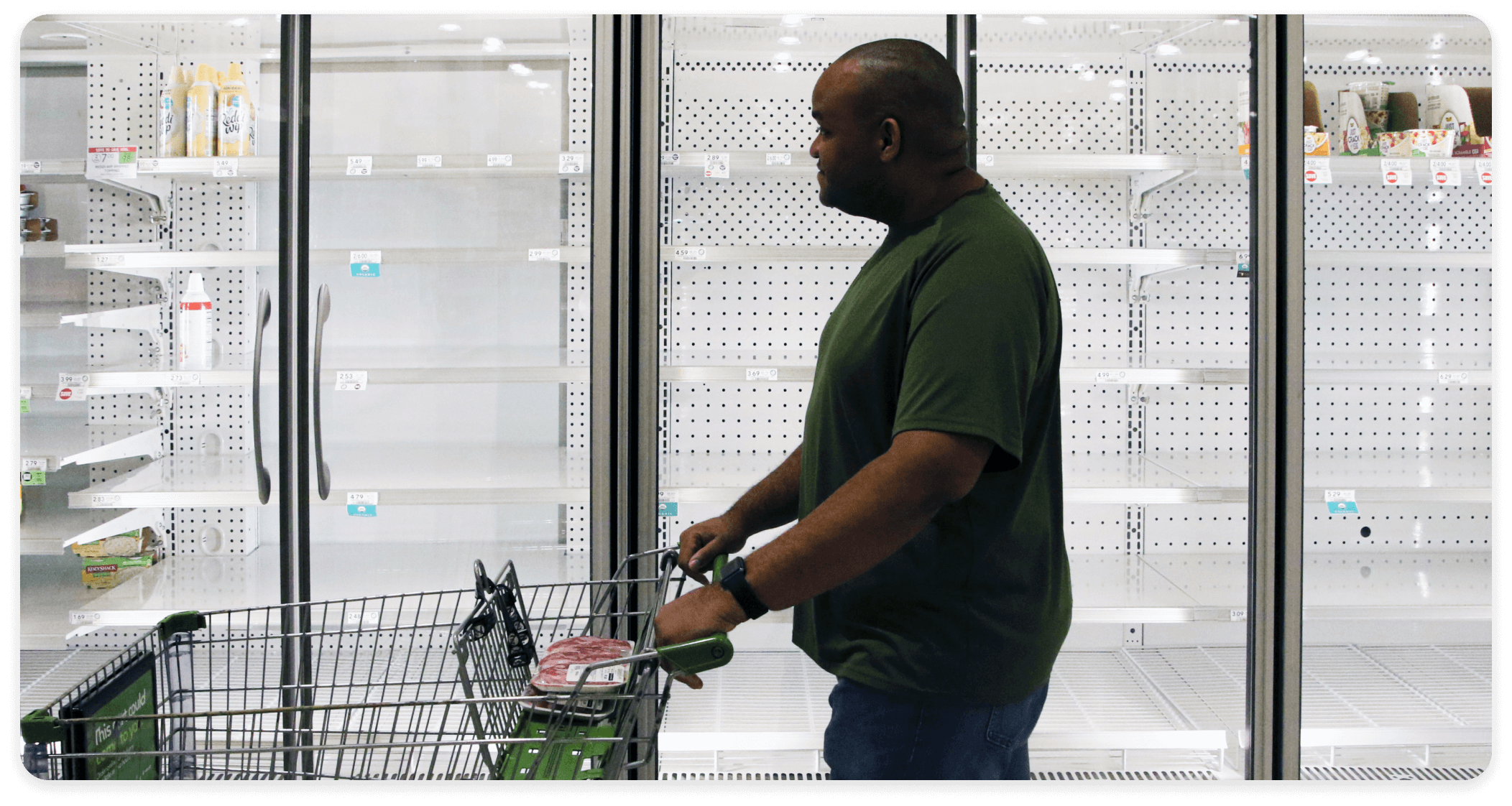
When we talk about food security issues in our communities, Americans often think of famine and other images associated with “global hunger.” However, that’s not entirely accurate. In fact, roughly 10% of Americans faced food insecurity at some point in 2021. Furthermore, while people affected by food insecurity face hunger; these two terms are not interchangeable. Hunger refers to the physical sensation of needing food. Food insecurity is the lack of access to food.
People that struggle with food security may experience a lack of food in the short term or for extended periods of time. According to the U.S. Department of Agriculture (USDA), there are four ranges of food security:
- High food security, which is where people have no problems accessing food or maintaining a relatively nutritious diet.
- Marginal food security, which is where people experience some issues accessing food, especially nutritious foods.
- Low food security, which is where people have some access to food but there are few high-quality, nutrient-rich options, and they may not be able to eat regularly.
- Very low food security, which is where people have little access to food, especially quality food options, and regularly experience low food intake.
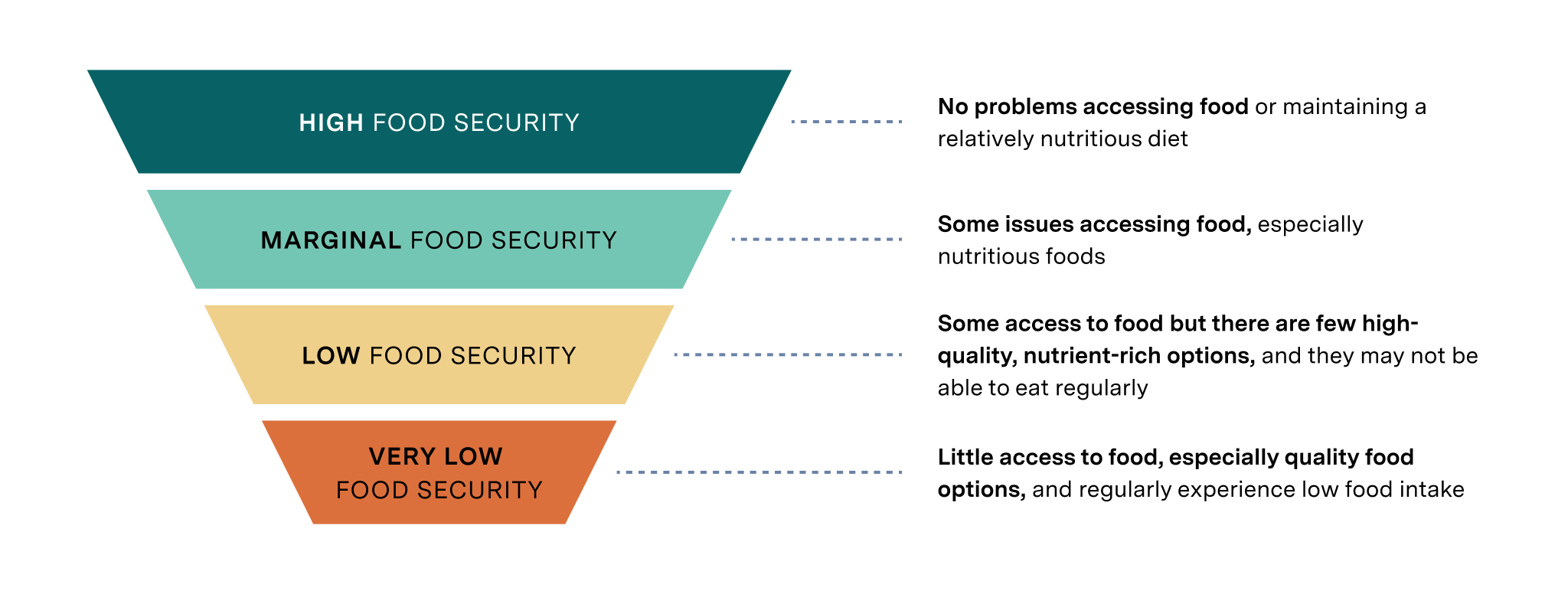
Social determinants of health
Food insecurity is one of the social determinants of health (SDOH). SDOHs are non-medical factors that impact people’s health outcomes. Some of these determinants include housing, income, education, and access to healthcare.
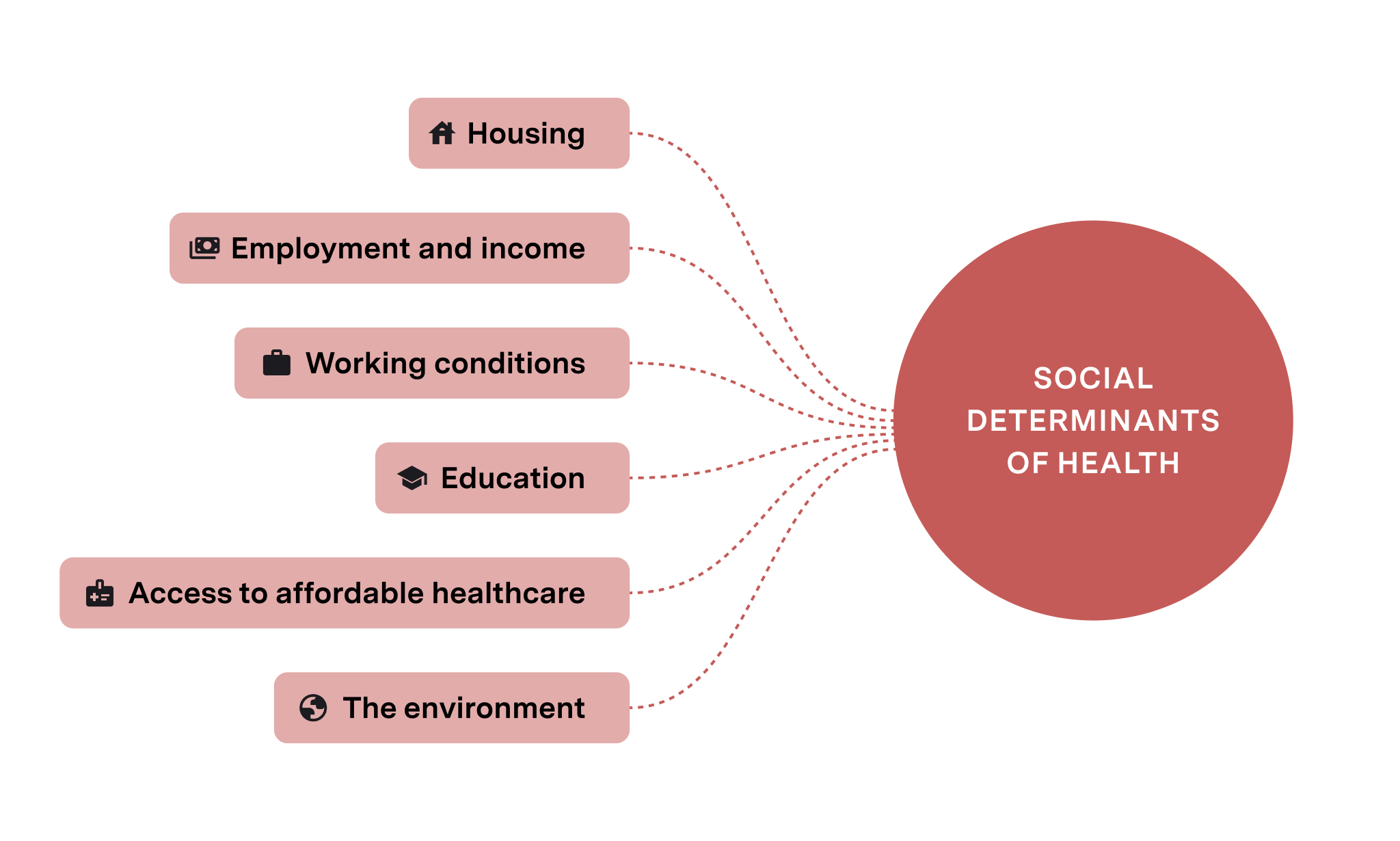
SDOHs help to indicate a person’s quality of life, and they are often intertwined. For example, food insecurity can be linked to other SDOHs, such as employment. When leaders understand the links between quality of life issues and these factors, implementing solutions that target food insecurity becomes easier and more effective. If community leaders can determine that areas with high rates of food insecurity also have high rates of unemployment, they can create interventions to improve employment rates and combat food insecurity.
However, it’s difficult for community leaders to gain a holistic view of these links. After all, data related to SDOH is frequently siloed across several sources. In order to make intelligent decisions when it comes to food insecurity, it must be a priority to bring this data together.
What causes food insecurity?
There are many social, economic, and environmental factors that can cause food insecurity in a community. Some of the most common factors include:
Poverty, low income, or unemployment
Low-income households and those with one or more unemployed individuals are more likely to face food insecurity. These families may have to prioritize paying for other necessities, like housing and transportation for work, over paying for high-quality food. For example, a family of four with only one working adult may not be able to afford enough healthy food for each person.
High cost of living in the community
The cost of living is the amount of money needed to meet essential needs. This includes things like food, housing, transportation, taxes, and healthcare. However, these costs can vary considerably between cities, states, and regions. For example, the average annual cost of living in New Jersey is nearly $50,000 while in South Carolina, it is approximately $35,000.
In areas with a high cost of living, even households with moderate income levels relative to the national average can struggle. This can lead to strict budgeting where people have to sacrifice the amount or quality of food they buy. For instance, in New Jersey, where the median rent is around $2500/month, a four-person household that makes $4,000/month could still struggle to pay for energy, transportation, healthcare and food costs, considering a low-cost food budget is estimated between $900 and $1,100 per month.
Living in a food desert
A food desert is an area where there are few convenient options for purchasing affordable and nutrient-rich foods. Food deserts usually lack enough grocery stores and instead have a lot of fast food options and convenience stores. When any community is in a food desert, food insecurity is incredibly common.
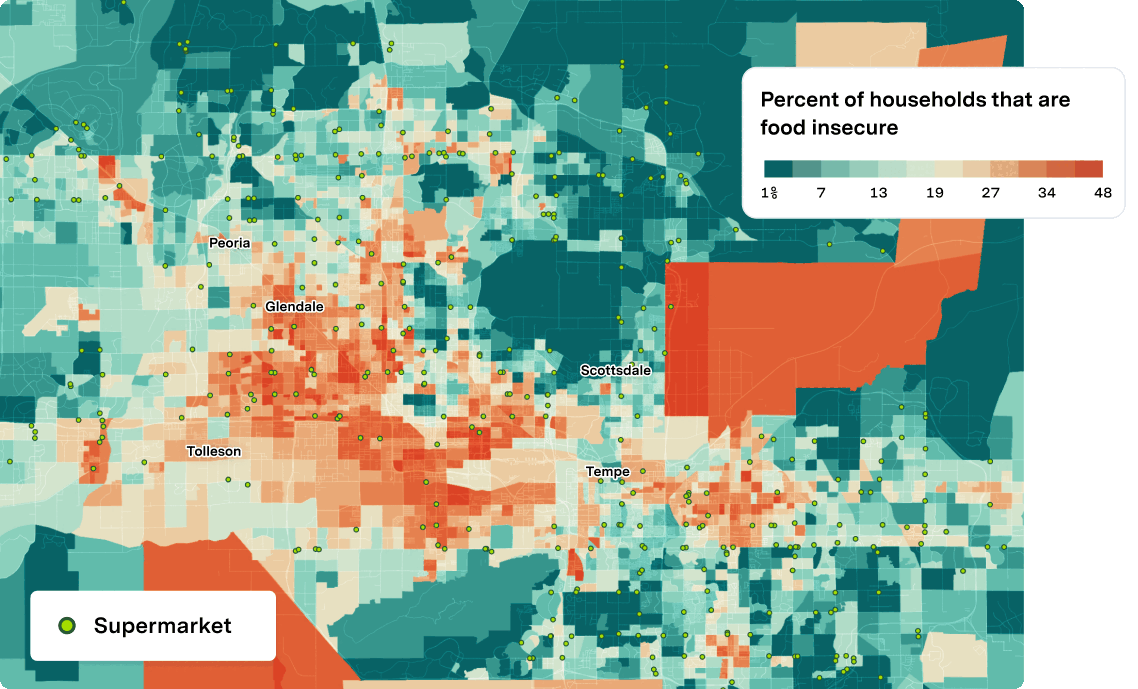
You can find food deserts in both urban communities and rural areas. In a 2018 report, the Cuyahoga County Board of Health found that more than one-third of the county’s population lived in a food desert, including nearly two-thirds of Cleveland residents. The rural town of Drew, Mississippi, became a food desert when its final grocery store closed in 2012.
Systemic racism and discrimination
People of color are at higher risk of experiencing food insecurity because they also experience:
- Higher barriers to gainful employment. For example, it may be more difficult for people of color to find a job that pays a decent wage they can use to support themselves and others in their household. This may be because there is a lack of high-paying jobs in their area, limited access to education that enables them to get higher paying jobs, or discrimination against people of color in the hiring process.
- Higher rates of job loss, which means they are less likely to maintain a steady income to provide for themselves and their families. A person of color who is unable to keep a job due to lack of consistent work in their area may regularly experience food insecurity.
- Higher rates of incarceration. Black people make up over one-third of the population who are incarcerated. Other ethnic groups, including Hispanic and Native American people, are also imprisoned at higher rates than their White counterparts. So, a family of color may have fewer options for employment because of a conviction history.
All of these factors are rooted in systems of oppression and discrimination that adversely affect people of color.
It’s easy to link many of these causes of food insecurity to the social equity issues that we see in our communities, including widespread health issues.
Health risks of food insecurity
When people don’t have access to enough food—or nutritious food options—communities are more likely to experience a number of negative health risks, including:
- Chronic diseases: Adults facing food insecurity are more likely to develop chronic diseases like diabetes, heart disease, and even cancer. For example, people in food-insecure communities are more likely to eat a diet high in fats and cholesterol, which leads to higher risks of diabetes, heart disease, liver disease, and more.
- Obesity and weight-related issues: People who experience food insecurity are more likely to struggle with maintaining a healthy weight. Those who must consume calorie-laden foods that lack nutrients develop obesity at more frequent rates. Those who don’t have regular access to enough food may face issues with being underweight and malnourished.
- Poor children’s health: Children in food-insecure homes get sick more frequently, take longer to recover from illness, and go to the hospital for severe illnesses at higher rates. These children are also more likely to struggle with emotional, behavioral, and cognitive issues, both at school and home. Those who grow up in a food-insecure household struggle to learn healthy eating habits, which leads to a higher risk of developing chronic health issues.
- Issues with pregnancy and labor: Expectant mothers need higher amounts of key nutrients to keep themselves and their babies healthy. Food insecurity can increase the risk of early labor, birth defects, and low birth weights. In addition, women in food-insecure households may struggle with weight-related issues that can further complicate pregnancies and put mothers and infants at risk.
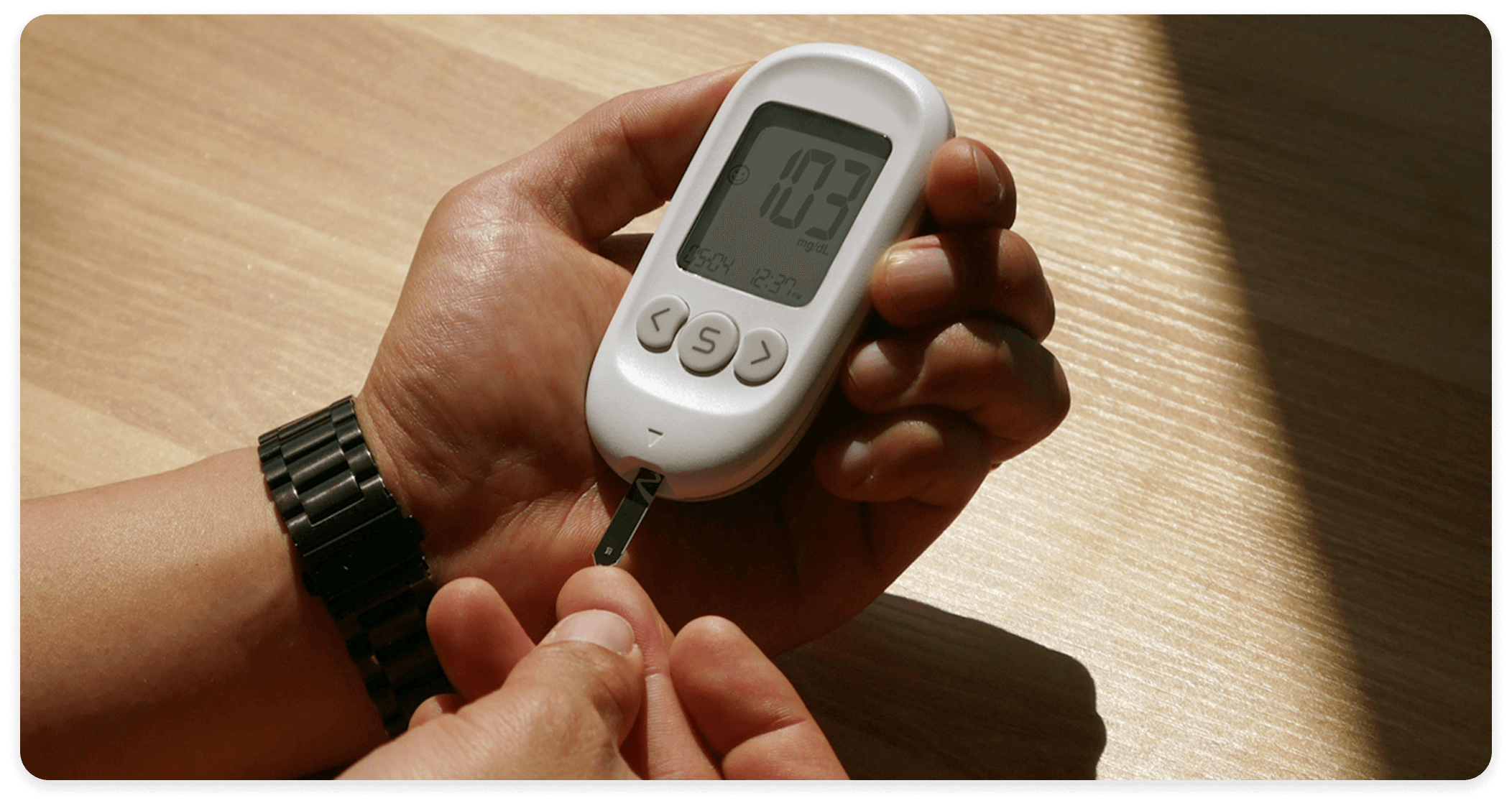
Impacts on the community
The negative health risks caused by food insecurity don’t only impact those in food-insecure homes. In fact, a community with high rates of food insecurity is more likely to have an overburdened healthcare system, which is due to the high rates of chronic disease. An overburdened healthcare system contributes to higher costs that hurt local economies. This means that high rates of food insecurity cause a ripple effect throughout a community.
Extreme heat and food insecurity
July 2023 marked the hottest month ever documented. With extreme heat becoming a regular occurrence, it’s imperative for community leaders to step up their efforts to safeguard those most at risk. While this certainly involves prioritizing improvements to our energy infrastructure and investing in cooling centers – what may not be immediately apparent is the vital need to aid those who grapple with food insecurity.
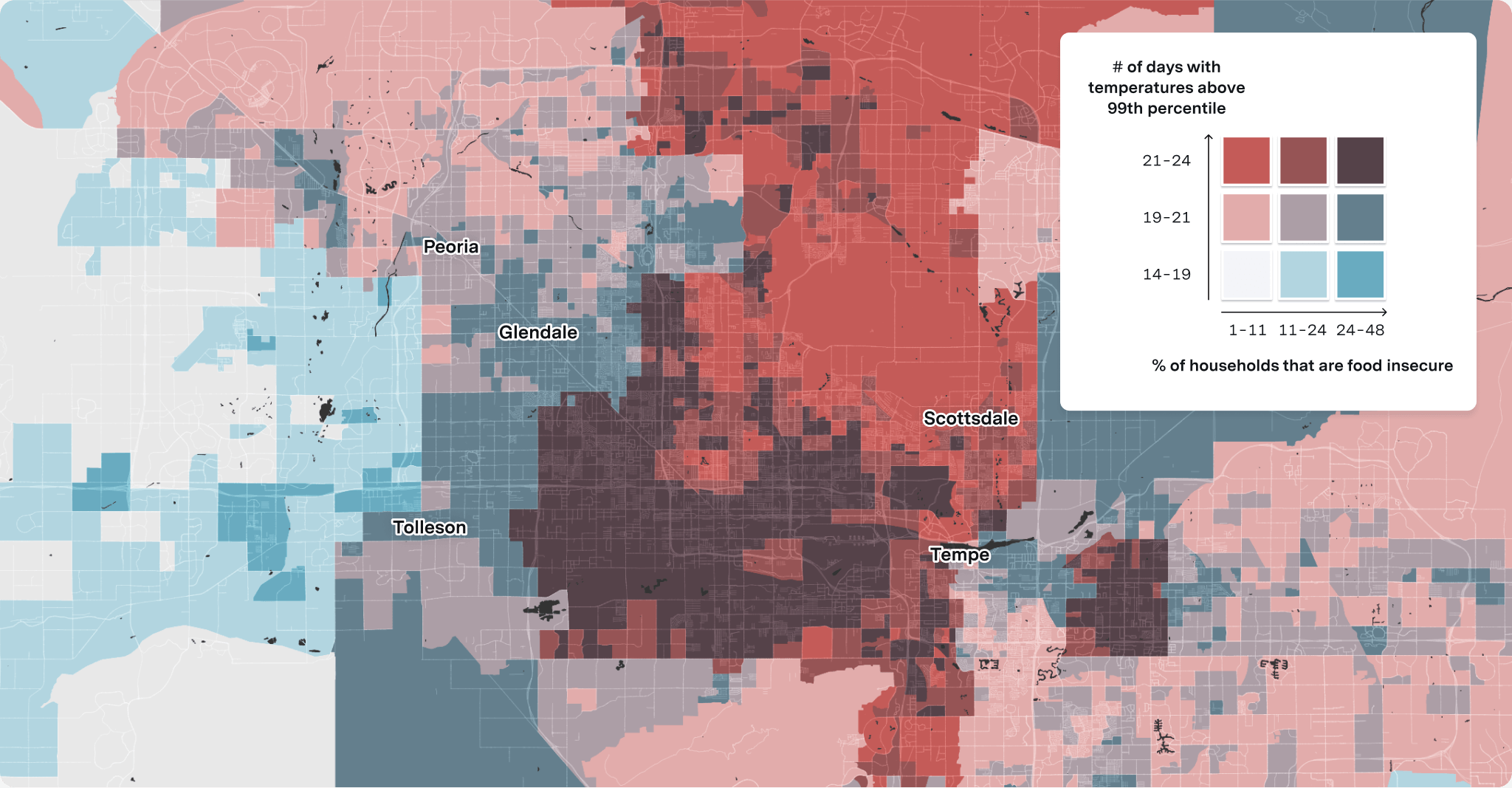
Households facing food insecurity are particularly vulnerable to the health and economic challenges that arise during intense heatwaves. Battling heat and dehydration can put additional pressure on already tight food budgets. High-quality foods, especially fruits & veggies, contain more water to help combat dehydration – so access to affordable, healthy food is critical during sweltering temperatures.
How can we address food insecurity?
There are several different ways community leaders can address food insecurity. Nutrition programs are a good solution because they directly increase access to healthy foods. Common programs include:
Supplemental Nutrition Assistance Program (SNAP)
SNAP is a federally funded food security program that provides low-income families a stipend for buying food and other necessities. Families must be at or under 130% of the poverty line, but specific income qualifications vary by state.
Low income contributes to high rates of food insecurity, and SNAP supplements people’s food budgets. This helps low-income households afford healthier food options at any participating grocery store, retailer, or market. A low-income family that uses SNAP benefits can better afford fruits, vegetables, and other fresh ingredients. Plus, they won’t have to choose processed, nutrient-lacking foods because they’re cheaper.
Increasing the number of retailers and food providers that accept these benefits, as well as ensuring all eligible households are enrolled can make SNAP even more effective.
Food Banks
Communities can establish food banks that collect donated food to give to families and individuals in need. Local or national organizations, like faith-based organizations and charities, may sponsor these food banks. For example, the Houston Food Bank is an affiliate of Feeding America and is the second-largest food bank in the country. Other institutions, like schools, businesses, and nonprofits, may host food drives to help supply food banks.
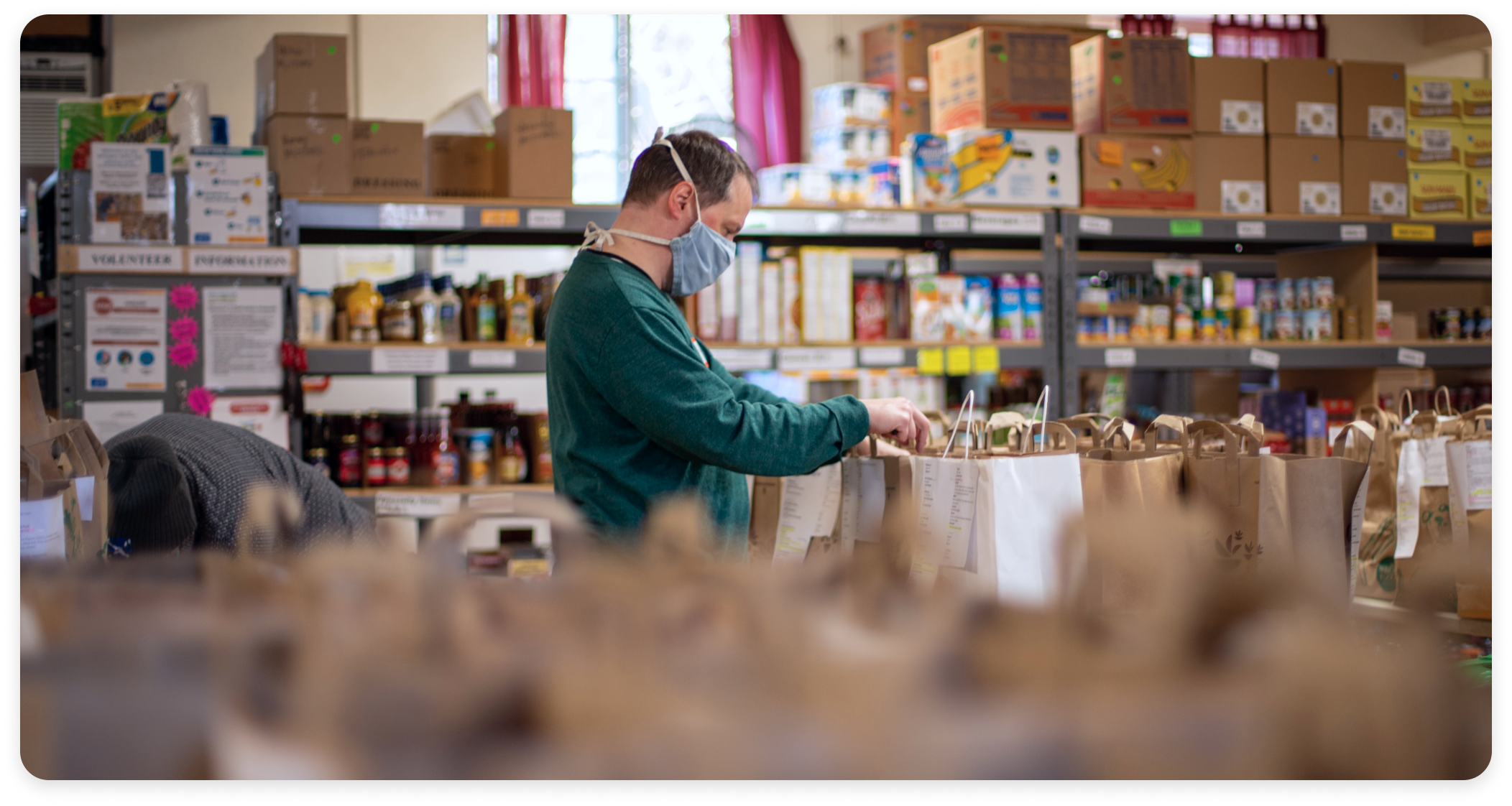
Meal assistance and delivery for elderly adults
The elderly may be more likely to experience food insecurity, even in relatively food secure areas. An elderly adult may have a hard time getting to the grocery store, limiting their access to nutritious foods. Additionally, these folks are usually on a fixed income with limited pensions, retirement funds, and Social Security benefits.
The Commodity Supplemental Food Program (CSFP) is a federal program that sends boxes of food to those who are 60 years of age or older every month. This program aims to eliminate the hurdles that put elderly folks more at risk of food insecurity.
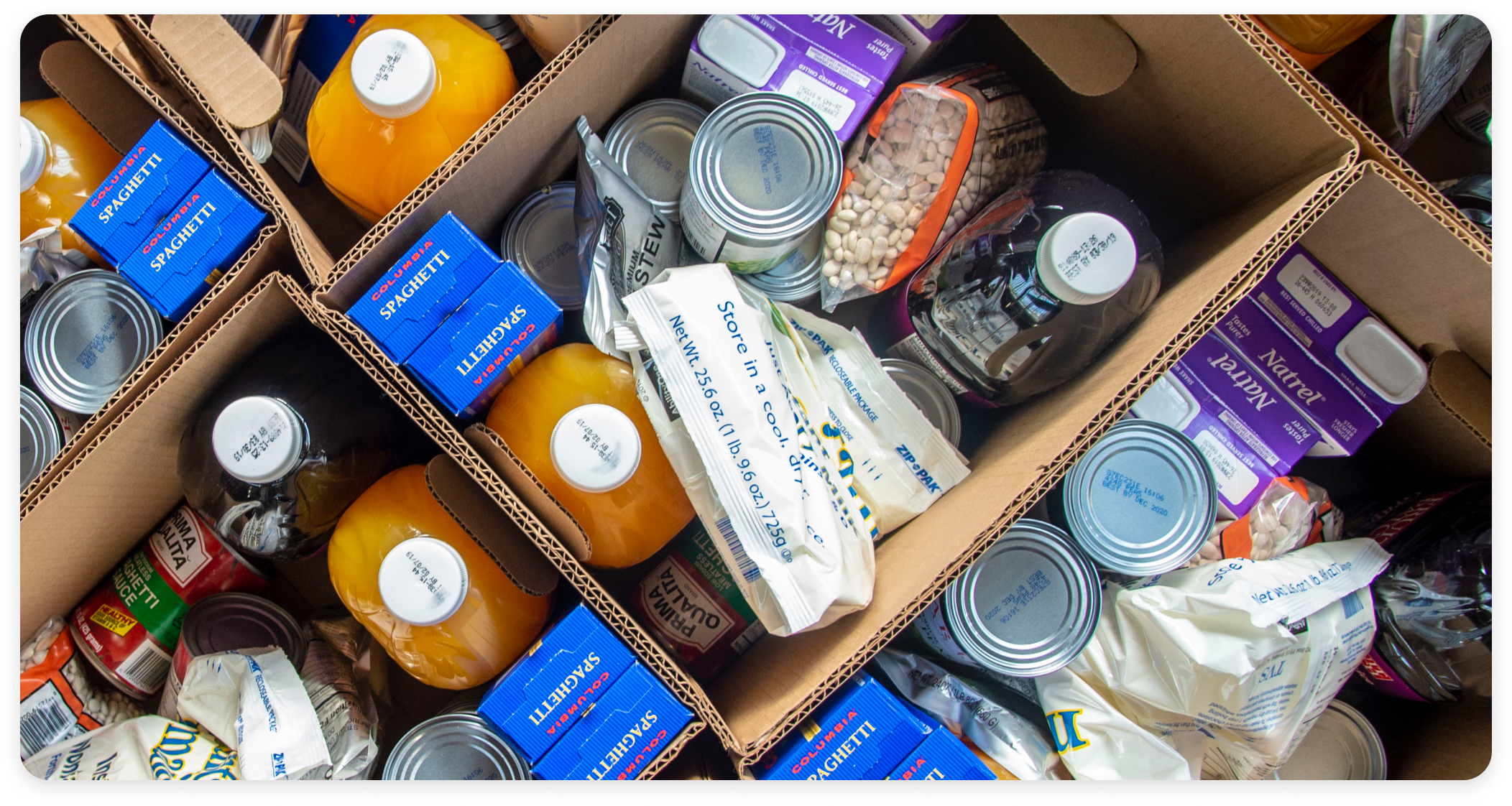
Child nutrition programs
Children are also incredibly vulnerable in food insecure communities. There are multiple nutrition assistance programs directed at families with children:
- The Backpack Program discreetly provides children from food-insecure homes with backpacks full of healthy kid-friendly food.
- The School Breakfast Program is a federally funded meal program that provides free or reduced-cost breakfasts to children in public and private schools.
- The Special Supplemental Nutrition Program for Women, Infants, and Children (WIC) is an extension of SNAP benefits for families with pregnant women, recent mothers, infants, and children.
While programs like these help combat food insecurity, there’s still more work to be done. Oftentimes, siloed decision-making curbs the effectiveness of food insecurity solutions due to the intersectional nature of its causes. It’s difficult for policy-makers to visualize where need and eligibility for these types of programs are, as well as how both evolve over time.
In order to close the gap of program participation and visualize areas with high rates of food insecurity, you’ll need a solution that aligns data-driven insights with on-the-ground work. After all, food assistance programs require local community relationships. Be sure to consider if a solution can provide data-driven insights that empower smarter decision-making. This will help maximize the impact of programs, and ensure that communities boost their resilience.
Resolve food insecurity in your community
Food insecurity prevents people of all ages from getting the nutrients they need to live a healthy life. When people aren’t able to live a healthy life, our communities can’t thrive.
One of the most important tools community leaders need to optimize nutrition programs and resolve food insecurity is comprehensive data. UrbanFootprint unifies previously siloed data on climate, environmental, urban, and socio-economic factors to surface powerful, holistic, and actionable data insights to help combat problems like food insecurity.
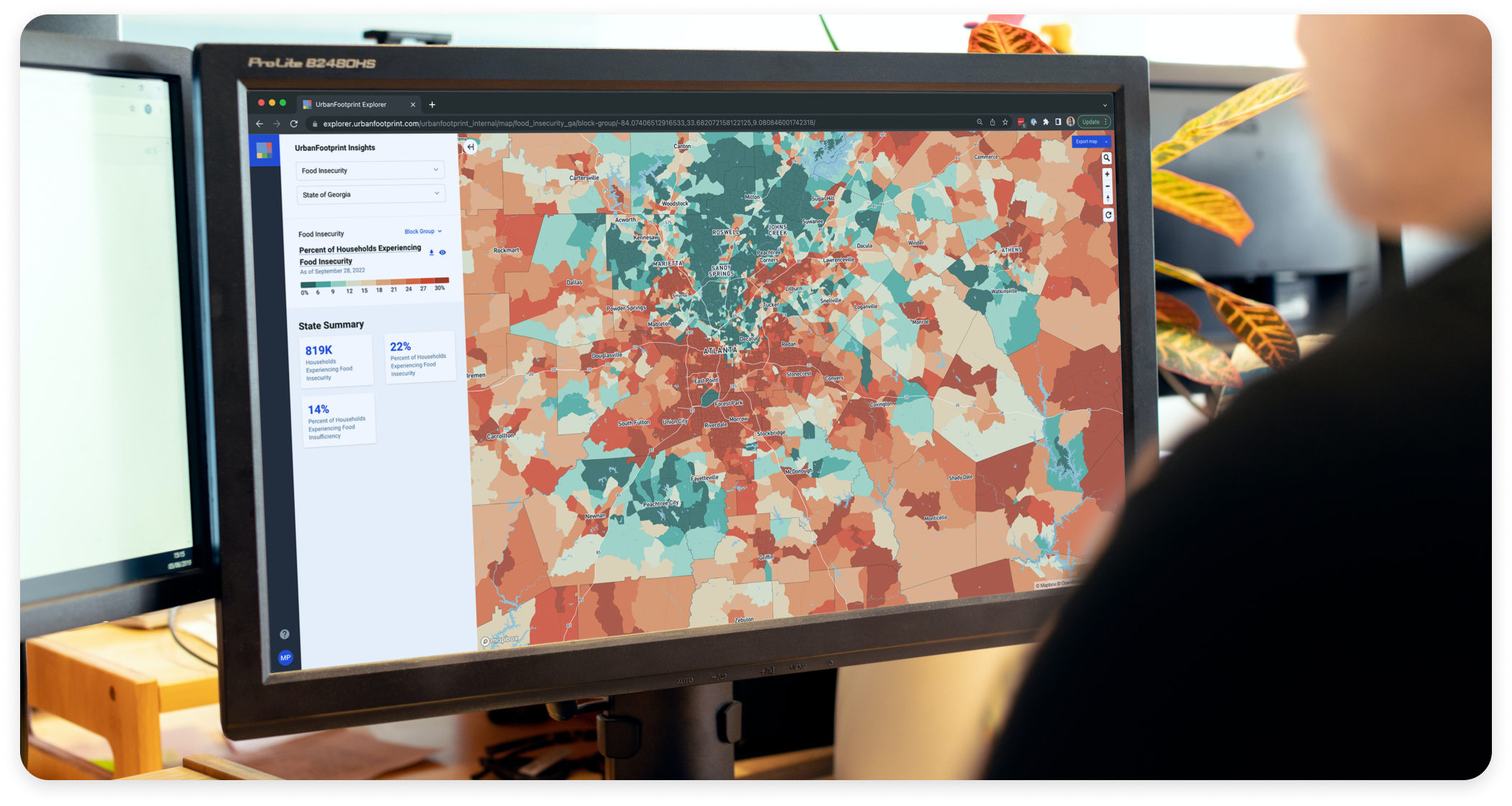
The UrbanFootprint platform helps public service and administration professionals map and measure community vulnerability and eligibility for federal and state assistance and disaster relief with comprehensive data, models, and tools purpose-built to target public assistance more effectively. Join our community to stay up-to-date on the ways UrbanFootprint can empower assistance programs and help you have the greatest impact on food insecurity in your area.








